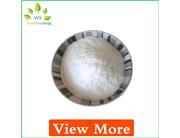1. Metabolic Labeling & Glycobiology
- Tracking Glycosylation:
- Cells metabolize this compound, incorporating it into glycoproteins/glycolipids. The azido group allows subsequent labeling with alkyne probes (e.g., fluorescent dyes, biotin) via **CuAAC** (copper-catalyzed azide-alkyne cycloaddition) or **SPAAC** (strain-promoted click chemistry).
- Applications: Visualizing aberrant glycosylation in cancer cells or pathogens.
- Glycan Profiling:
- Used in glycan arrays to study carbohydrate-protein interactions (e.g., lectin binding).
2. Drug Delivery & Targeted Therapy
- Antibody-Drug Conjugates (ADCs):
- Azido groups enable site-specific conjugation of toxins or drugs to glycosylated antibodies, improving therapeutic precision.
- Prodrug Activation:
- Exploits glucose transporters (e.g., GLUT1) to deliver azido-tagged prodrugs to tumors, followed by click-triggered release.
3. Material Science & Bioengineering
- Surface Functionalization:
- Grafted onto polymers or nanoparticles for bioactive coatings (e.g., antimicrobial surfaces, tissue scaffolds).
- Hydrogel Design:
- Crosslinked via click chemistry to create glycosylated hydrogels for 3D cell culture.
4. Vaccine Development
- Synthetic Glycoconjugate Vaccines:
- Azido sugars serve as intermediates to link bacterial polysaccharides to carrier proteins (e.g., Streptococcus pneumoniae vaccines).
5. Enzyme Inhibition Studies
- Glycosidase Inhibitors:
- Mimics natural substrates to design inhibitors for enzymes like hexokinase or O-GlcNAc transferase, relevant in diabetes/metabolic disorders.


 China
China

